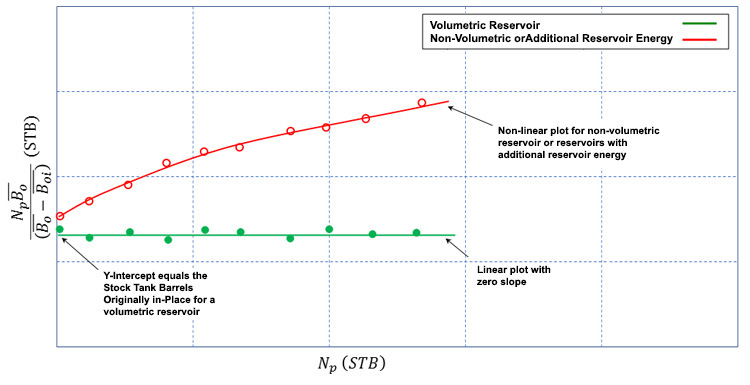In our earlier discussion on the estimation of Stock Tank Oil Originally In-Place, I mentioned that the two methods available for this task were the Volumetric Method and the Material Balance Method. We are now in a position to discuss the use of material balance for the estimation of the original oil-in-place in the reservoir. If we solve Equation 4.58d for STOOIP, , then we have:
Now in the field, if we accurately meter the oil production, , and actively measure average reservoir pressures (to evaluate ), then we can estimate and plot (on the y-axis) and on the x-axis (or, alternatively, time, t, on the x-axis). This results in a plot like that shown in Figure 4.08.

If all of the assumptions inherent in the development of Equation 4.59 are valid, then the data in Figure 4.08 should plot as a straight line with a zero slope and a y-intercept of (STOOIP), that is, the green curve in this figure. If these assumptions are not valid and there is more energy in the system other than the oil expansion, then the data will plot as a non-idealized curve, that is, the red curve.
The use of the material balance method to evaluate the original oil-in-place has several requirements associated with it. First, the Material Balance Method requires that production data are available. Therefore, it requires that the reservoir has been producing for some Historical Production Period (time period where the field has been on production). We must also have accurate estimates of the produced oil, , during this historical production period. This is typically a good assumption because we are selling the oil and must have accurate estimates for all of our sales obligations. In addition, it assumes that we have accurate estimates of the average reservoir pressure, , with time. This is part of a standard data acquisition program in the field and typically requires the involvement of reservoir engineers, production engineers, and geologists for good, representative estimates of average pressure. Finally, we must have accurate laboratory measurements of the formation volume factors, .